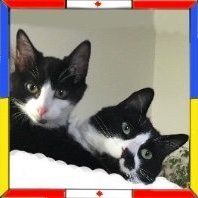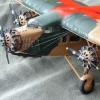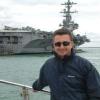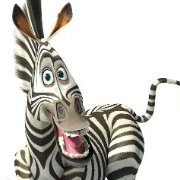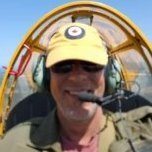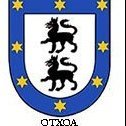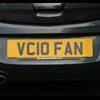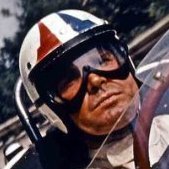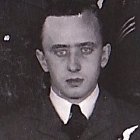Search the Community
Showing results for tags 'rcaf'.
-
I’m building this for a dear friend I’ve known since we were in Air Cadets. Ken and I have talked on the phone for hours, many times. We both have a passion for aircraft, and modelling them. Ken had his commercial license and was off to a great career when he became mentally ill, and his life changed dramatically. He could no longer work, so he played at many events and restaurants with his accordion, to earn a bit of extra money. We both built models of aircraft, including rubber powered and later RC, however Ken liked my paintwork and I ended up giving him a lot of my built models and even painted a few of his builds. We both love the CF-104 Starfighter and have seen and heard them fly, many times. Ken bought a 1/32 Revell Starfighter that was already built, in the CAF Tiger Meet scheme, and he wondered if I could strip the paint off and redo it in regular RCAF bare metal. I have stripped many models, but the yellow paint must have been industrial grade paint. It took a long time with many applications. I have worked on it on and off for a while, the kit was poorly moulded with a lot of sink marks. So I purchased a used Hasegawa kit for Ken and I am building it here because I have to finish it asap. Ken was recently diagnosed with cancer, I promised him I would build the Starfighter and if there’s enough time the Airfix Mk.IX Spitfire in Buzz Beurling’s markings. So I am dedicating all of my time to getting these done so he can enjoy them and display them in his apartment. Sorry for the long intro, I just felt I needed to do that. So here we have the Hasegawa kit and I have already desprued everything, removed parting lines and wet sanded the raised detail off. The nice thing about silver plastic is that when you sand off the details you can see clearly exactly where they were, so scribing goes quickly. I have scribed the wings and they should be ready to paint tomorrow, I can also do the red stabilater. I try to paint first before foiling to avoid having to put masking tape on the foil. I have put together the ejection seat and cockpit tub, and cemented the empennage together, as well as the engine. The kit is designed to have a removable empennage so the engine can be displayed. I also custom mixed that 501-109 greeny bluey grey for under the wings, I added some transparent teal to Tamiya XF-12 IJN Grey and I’m happy with the result. The basket case Revell Starfighter above is going back to the closet. The Hasegawa 1/32 Starfighter is off to a good start. Not sure about the engine yet, but Ken wants a period correct pilot. The pilot figure just to the left of the engine has the early style helmet with the unprotected visor, so it can be detailed and look good in the cockpit. Having a pilot in the cockpit negates the need for all the remove before flight paraphernalia if one is going to display it parked on the tarmac. Ken actually had a lengthy phone conversation with Wing Commander Bob Middlemiss, talking about Buzz Beurling and the Starfighter. There’s a photo of Bob Middlemiss in the cockpit of one of the first CF-104’s, and he has the early helmet, so I’ll try to make the pilot figure closer to what I see in early RCAF photos. More tomorrow… Cheers Jeff
- 26 replies
-
- 5
-

-
- Aluminium foil
- Above & Below Graphics
-
(and 1 more)
Tagged with:
-
Encouraged by warm reception (Thanks for All !) of my Wallace, Wapiti and Wellingtons I would like to share with next old Frog/Novo kit - Blackburn Shark. I converted it to Mk III. This is No 546 RCAF, operated by Sq. 7, RCAF Station Prince Rupert BC Dec. 41 to 1943. It was use for anti submarine patrols.Conversion was also scratch ("free hand"). Best regards Jerzy- Wojtek
- 31 replies
-
- 36
-

-
- Blackburn Shark
- RCAF
-
(and 1 more)
Tagged with:
-
A few pictures of my Airfix 1/72nd scale Mustang kit finished in RCAF Central Experimental & Proving Establishment markings. Taken from a series of 1949 photographs. The aircraft featured the short-lived RCAF Type 1 roundel, which was in use, officially, from mid-1946 to May 1948. I don't have a RCAF model in my collection with the Type 1 roundel so that is what attracted me to the livery. No need to say anything about the kits since a lot has been written about it in other threads in this forum. Good solid representation of the Mustang. I had a few issues like the control column being so fine it was broken on the sprue, same thing for the radio mast, some really thick injection gates on the fuselage. No big issues. Not Eduard but a solid model nonetheless, in my humble opinion. An affordable alternative, suitable for building up a collection of the type. Built more or less straight from the box. Had to replace the control column and used the radio mast from an Academy kit in the spares box. I drilled a tiny hole in the canopy to run the radio wire through from the back of the seat plate to the tail. I should have bought the F-51 variant of the kit because I ended up making 12 rocket mounts on under the wing from plastic strip. Seems all the RCAF postwar Mustangs had the mounts, usually three under each wing. Also had to slim down the prop because the postwar RCAF did not use the cuffed propeller as far as I know. All paints Tamiya. Decals are home made. My first use of the Ghost White toner to make white backgrounds for the fin flashes. Thanks for viewing. Greg
-
Some images of various CT-156 Harvard shot in September and October of 2024. The Harvard is on the way out, to be replaced over the next few years with the PC-21. Training on the Harvard continues but with a much reduced fleet of airframes. As far as I noticed, 156113 is the only Harvard to get the RCAF 100th anniversary logos. The next few were shot in 2019, during the period one airframe was painted in a commemorative BCATP livery. Thanks for watching, Cheers Greg
-
Greetings all! This is a rather personal project to me, as I am in fact related (somewhat distantly) to one of the crew. Many years ago, when I was just a kid, but already developing an immense passion/obsession with WW2 history (particularly aviation-wise!) I remember my Grandfather mentioning in passing that his Cousin Peter was in the RAF during the war. He explained that Peter, an up-and-coming name in the cricket world, was a crew member on a 'Sterling' bomber, and had been killed when the aircraft crashed 'somewhere in Holland'. Later, he corrected the story, stating that 1394512, Sergeant Peter Brindley Robinson had in fact been aboard a Halifax when it crashed, and he was buried in the CWGC cemetery in Wichmond, in The Netherlands. Sergeant P B Robinson (right) and his brother Billy Armed with this information, I began a research project that has been ongoing ever since. The Halifax bomber, serial DK191 is recorded as having been a Mk. V, with the slightly unusual looking, but streamlined, 'Tollerton' nose. The aircraft was on the charge of 427 squadron, Royal Canadian Air Force, stationed at RAF Leeming, Yorkshire. It was coded ZL- but the individual code letter seems to be different, depending on what source you look at. The Studiegroep Luchtoorlog, and Aviation Safety Database list it as 'G' whereas some sites suggest 'K'. On the night of the 22nd/23rd June 1943, DK191 was one of over 150 Halifaxes (along with Lancasters, Stirlings, Mosquitoes and Wellingtons) sent to bomb the Ruhr town of Mülheim. Take-off was at around 23.40 Hours. The Mülheim raid was the first time the crew of '191 had successfully reached, and bombed their target. On a previous attempt, they were forced to jettison the bombs and return home. Tragically, it would prove the first and last time. On their return, whilst flying over Holland, they were intercepted by Hauptmann Günther Friedrich of the Stab/NJG 1, piloting a Messerschmitt Bf110 G-4, and shot down. The bomber crashed in a field in Bronsbergen, by the IJssel river, near the town of Warnsveld. None of the crew survived. The crew on that flight were: Pilot F/O. N.D. Reid AFC J/10353 RCAF - Buried Wichmond E 14-17 Flight Engineer Sgt. D. Mann 1437312 RAF - Buried Wichmond E 14-17 Navigator F/O. A.A. Pariseau J/14193 RCAF - Buried Wichmond E 14-17 Wireless Operator/Air Gunner Sgt. P.B. Robinson 1394512 RAF - Buried Wichmond E 18 Bomb Aimer. F/O B.M. Gracie J/21043 RCAF - Buried Wichmond E 13 Air Gunner F/Sgt. H.P. Heximer R/131460 RCAF - Buried Wichmond E 12 Air Gunner F/Sgt. N.F. Notley R/103340 RCAF - Buried Wichmond E 14-17 Note: Sites seem to switch the roles of Peter and Byron Mcgie Gracie. Peter was a trained Wireless Op and Gracie was a trained Bomb Aimer, therefore it seems highly unlikely they switched roles. It's strange that Gracie and Robinson should be switched, as it appears they were close friends, in fact our family have an incredible photo showing Peter and Byron with my Grandad, Great Great Uncle, and my other First Cousin Twice Removed. We don't know if the Gracie family ever knew about the photo, so if Byron's descendants are still around, we hope to give them a copy someday! Peter (centre) with his Cousin (My Grandfather), Sister Joan, Uncle Brindley, and Byron (right) In remembrance of Peter, Byron, and the rest of the crew who lost their lives that night, I have decided to build a 1/72 model of '191, using Revell's Halifax B Mk. I/II, GR.II as a basis. I hope to try and get hold of one of Eduard's interior PE sets (though discontinued), along with Quickboost gun barrels and, of course I need to obtain a 'Tollerton' nose! I also read something about engines and different parts dependent on manufacturer? If anyone can help with the nose in particular, I would be most grateful! I know Freightdog used to make them, and weirdly another Revell boxing has one! Any advice on the look of '191 would also be gratefully received: I want to make it as accurate as possible. This will be another long term project, but if a job's worth doing and that! Please do stay tuned!
-
Hi all, after a long absence from BM, here is one of my recent almost-completions, the Academy PBY-5A in a ln interpretation of the scheme in the old Airfix example. The Academy kit has a number of flaws; one of the most oft-mentioned are the under-diameter cowlings and nacelles. In addition' I don't think the glazing of the observation bubbles is particularly accurate.However, this build is oob, as I wasn't after accuracy; I just wanted a PBY-5A in my collection. So, here it is: I had good fun with the weathering; wanted to give an impression of the waterline, although it's an amphibian. Still got a few small bits to add, but nearly there. Hope you like it. Rgds Martin
-
Hi all I thought even though I have a few builds on the go, 2 Beaufighters and a Seafire, I have been drawn to this little cutie. Well I do like a yellow Aircraft. I didn't finish a Biplane last year so thought I would put that right early on. Looks quite a lovely kit. I would like to thank the guys who responded for info requests in the WW2 aircraft section amd uploaded some lovely photos and info. They are @Work In Progress @JWM @dogsbody @marvinneko and @KRK4m Thanks guys I have made a start, the resin engine is together with the cowl panel fettled and dry fitted at the mo. Cockpit sidewalls with added 0.3 mm Brass wire Painted and cockpit floor and seats painted with spares box PE belts and kit supplied resin control columns added Pleased with it so far Thanks for looking. Chris
- 102 replies
-
- 18
-

-
Here's my Airfix 1/48 Anson, built as W2090/6453 of No 1 Air Observer School, RCAF, using Xtradecals, just finished in the WW2 Twins group build. Largely OOB with Quinta Studio 3D decals (very nice, but barely visible from the outside) and Eduard masks (highly recommended!). A bit too big to photograph in my usual set-up, so photographed on the dining table, hence the banana in the background in one of the photos! Build thread is here thanks for looking Julian
- 9 replies
-
- 44
-

-
- Airfix 1/48 Anson
- Xtradecal
-
(and 1 more)
Tagged with:
-
A drawing I did of a CF-188 in it’s early days of service. The aircraft visited our local airbase quite often for gunnery camps in the mid eighties and that is how I depicted it.
-
Hi all I wonder if if there is anyone that knows the interior colour for the cockpit of the Fleet Finch Trainer . I can see online the Canadian Warplane Heritage machine which is a light grey, but I wondered if during WW2 the cockpit interior would have been interior grey green. There is a Fleet Fawn online and that one has a grey green interior. I might have to consider modelling a Fawn too, looks incredibly sweet. Thank you in advance Chris
-
Here is. my 1-48 P40E Kittyhawk. This is the Italeri kit out of the box and kit decals. It is a rebox of the AMT kit and is quite nice given its vintage. The engraved details are finely done, level of detail is acceptable and fit is pretty good except for the engine cowl panels. The moulds are quite old and as a result there is flash on almost all parts that requires clean up. Apparently these Kittyhawks were painted by Curtiss to RAF described colours but using American standard paints. The Sky was from Gunze Aqueous, The Green is Tamiya RAF Dark Green and the tan is Aeromaster enamel mid-brown. I'm not sure it's 100% correct but it suits me. What is most interesting to me is the 111 Squadron RCAF roundels and codes used while stationed in Alaska. The wing roundels have the blue extended inwards. The fuselage had the outer yellow portion painted black. Then the letter codes on this example were underlined. Additionally the codes and the serial numbers overlap the fuselage band. The Italeri decals worked very well, however, I think the letter codes are slightly too large. They were very thin and easy to apply as long as you used lots of water to place them. They settled down with Daco strong solution. The only issue was placing the fuselage band which comes in two parts and this is not shown in the instructions. The solution is to leave a small gap on the right lower side for the base of the letter "L" and the small piece of band fits on the bottom. It is important to do the band and the letter codes and the roundels all at the same time- as I said use lots of water and don't let them set until they are all in alignment. Well here she is....
- 24 replies
-
- 48
-

-

-
Avro Lancaster B Mk. I (Serial No. R5727), built in the UK and flown to Victory Aircraft in Malton, Ontario, in August 1942 to serve as a pattern for the other Lancasters to be built in Canada. The fabrication drawings had been delivered in January, 1942. R5727 became the first of the type to conduct a transatlantic crossing. The first Canadian-built Lancaster was a Mk. X (Serial No. KB700), aka “The Ruhr Express” coming off the line a year after R5727 arrived in Canada.
- 133 replies
-
- 10
-

-
Exercise Cobra Warrior is run biannually and is the largest air exercise run by the Royal Air Force. The exercise is designed to train exercise participants in high intensity, large force, tactical air war fighting operations, whilst testing our enabling capabilities. Exercise Cobra Warrior is taking place from the 4th till the 29th of September and will see over 50 aircraft taking part. The exercise is being controlled by directing staff from 92 Sqn at RAF Waddington. Taking part in Ex Cobra Warrior 2023-2 are contingents from NATO, the Italian Air Force, Royal Canadian Air Force, Royal Norwegian Air Force and United States Air Force. 29 Squadron, RAF is flying four Typhoons from RAF Coningsby. The Royal Canadian Air Force are operating seven CF-188A Hornet jets from 433 Tactical Fighter Sqn deployed to RAF Waddington, supported by their CC-150 Polaris air-to-air refuelling aircraft at RAF Lossiemouth. Also, temporarily based at RAF Waddington is a Gulfstream E-550A intelligence platform from the Italian Air Force 14 Stormo, and a pair of NATO AEWF E-3A Sentries. The Royal Norwegian Air Force has deployed six new 332 Skv F-35A Lightnings to RAF Lakenheath for the duration of the Exercise. The USAF has also dispatched some 18 F-16C/Ds from the 52nd FW/480 FS at Spangdahlem to RAF Mildenhall. These jets that are boom refuellable have been tanking from a pair of Arizona ANG KC-135Rs also on temporary duty at Mildenhall during week one of the Exercise. The probe and drogue enabled Hornets and Typhoons are being supported by RAF Voyager aircraft flying from RAF Brize Norton. In addition, UK Joint Helicopter Command aircraft are being based at RAF Leeming and RAF Shawbury to participate in the exercise. The RAF’s Air Mobility Force is also taking part in the exercise deploying elements of 16 Air Assault Brigade during an associated ground mission that forms part of the overall exercise scenario. Here's a selection of shots of the participating aircraft I photographed at RAF Waddington and RAF Mildenhall during Cobra Warrior week one. NATO E3A Sentries from the NAEWF at Geilenkirchen in Germany detached to Waddington to provide AEW cover for the exercise. The Italian Air Force 14 Stormo/71 Gruppo operates two Gulfstream E-550A CAEW aircraft. Aircraft MM62203 was deployed to Waddington during week one of Cobra Warrior and is seen here returning to Practica di Mare on Sep 8th. The E-550A is far more than a traditional airborne radar picket aircraft but should more correctly be defined as an Airborne Early Warning, Battlefield Management & Communication platform. CF-188A 188736/YO-X on loan to 433 TFS but wearing the WWII commemorative markings of 401 TFS RCAF CF-188A 188746 wearing the markings of 425 TFS but on loan to 433 TFS, the RCAR unit attending Ex Cobra Warrior. CF-188A 188735 with special display markings Seen visiting Waddington on September 8th was 120/201 Sqn P-8A Poseidon ZP801. Also present were a trio of 25 Sqn RAF Hawk T.2s including ZK031/FG. At RAF Mildenhall two 161 ARW Arizona ANG KC-135R tankers were deployed during week one of Ex Cobra Warrior including 62-3550 seen departing for Phoenix on September 9th. No less than 18 F-16C/Ds from 52 FW/480 FS at Spangdahlem AB Germany were deployed to RAF Mildenhall for Ex Cobra Warrior including 'boss bird' 91-352 '52 FW' It is interesting to see the growing prevalence of the new low vis/radar reflective Have Glass paint scheme on F-16s as illustrated by 91-0338. And 96-0080 '480 FS'. Hope this photo essay has been of interest. My sincere thanks to Flt Lt Broome the MCO at RAF Waddington, and Wg Cdr Eklund at Air Command Media Ops. Thanks for looking! Mark
- 17 replies
-
- 29
-

-
Hi All, My latest completion is Special Hobby's Digby. Perhaps better known as the B18 Bolo in US service, a single squadron of these aircraft were delivered to the RCAF in 1940. The type was used by 10 (Bomber Reconnaissance) Squadron in the maritime patrol role, and were in service until 1943 when they were replaced by the B24, with a consequent increase in range and payload. The type was well-liked by its crews and was reliable and sturdy - during service the squadron gained the nickname 'North Atlantic Squadron'. The squadron had a number of bases during the Digby's service, but were primarily based at Gander, Newfoundland. I've chosen to complete as PB*X 747, which on 30th October 1942 was responsible for the sinking of U520. Here's a photo showing 747 in the background (photo for discussion only - will be removed on request): Here's the WIP if anybody is interested: Anyway, on with the photos: Here's a final shot with another unusual RCAF aircraft: I've enjoyed learning more about this unusual aircraft. My learning was greatly assisted by @Carl V, who was most generous with information on the Digby (thanks again Carl!) Thanks also to all those who have added kind words and encouragement along the way - it has been much appreciated! Thanks for looking, Roger
- 28 replies
-
- 53
-

-

-
- SpecialHobby
- RCAF
-
(and 1 more)
Tagged with:
-
Hi All, My next project will be Special Hobby's Digby, otherwise known as the B18 Bolo in US service. Now I shall admit that I knew nothing about this aircraft, but was looking for an esoteric subject after my Buffalo build - boy did I find it! The B-18 was based on the DC2 airliner and entered service with the USAAC in the mid-30s. The Canadian government purchased 20 of these aircraft in 1940, and following an evaluation period they were issued to 10 (Bomber Reconnaissance) Squadron, replacing their entirely unsuitable Westland Wapitis in the maritime patrol role. To my considerable surprise they served in this role until 1943 when they were superceded by B24s, which carried a much heavier payload for a longer range. This is not to say that 10 Sqn were unsuccessful with the Digby - indeed aircraft 747 piloted by F/O F Raymes successfully sank U520 on 30th October 1942 east of Newfoundland. Based on their success the squadron gained the unofficial title 'North Atlantic Squadron'. So, an unusual subject with an interesting history! Here's the box art: Here's the sprue shots: All in SH's usual hard grey plastic - detail all looks very nice. This was a large aircraft - comparable in size to the Wellington, I should say. Some nice transparencies: As usual there's a mix of resin and PE: The decals look to be nicely in register: There are a number of schemes, a couple of which depict aircraft in very early war camouflage (probably during the aircraft's evaluation phase?). I'm more interested in the aircraft during its active service, so a scheme such as this may be a good option: There is an all white scheme too: I initially wrote this option off, until I noticed the rather important phrase 'later on the machine received maritime camouflage'. So could it be that there is a TSS option out there? I have only found photos of the aircraft all in white, but that would be a tantalising proposition indeed (I bet @dogsbody would be all over this!). Anyway, it should be a fantastic learning opportunity, so feel free to hop on board the Bolobus! Thanks for looking, Roger
- 62 replies
-
- 15
-

-
- Special Hobby.
- RCAF
-
(and 1 more)
Tagged with:
-
I will call this one Would have, Could have, Should have(edit). Started later 2022 and rested in my Halfway house of models before being dusted off and finished just in the last few weeks. Thank you's go to @Steve in Ottawa @Sabrejet and @Gene K for advice, guidance and encouragement. Always appreciated. As well a modelling Yoda http://soyuyo.main.jp/index.html whose in depth study of the Hasegawa kit was valuable to this build. Decals are Leading Edge with stencils from Gene. Thank you for viewing and comments always welcome.
-

A rather attractive Ventura - Now finished
bigbadbadge posted a topic in Work in Progress - Aircraft
Hi all As well as the Oxford I have been working on a couple of other aircraft a 72nd scale Novo Percival proctor and this, the academy Lockheed Ventura II. Although I have decided to model a RCAF Western Air Command machine during Operation polar Bear in 1944/45. They were standard Venturas in the US Navy scheme and some were repainted in a scheme known as the Saddleback scheme with some yellow panels on the tail plane vertical surfaces and the tops of the outer main wings. The scheme looks particularly attractive I think. The model I am making s of a GR.V serial 2189 with code letter Q of 8 Sqn Feb to March 1945. This aircraft is called "Pats Pile". The kit is quite basic and although I am not correcting the cockpit on this I did make alterations to the pilots seat as shown in the first image. The fuselage went together quite well with minimal filler, however when it came to the canopy it was around a millimetre to shallow this was rectified by sanding off the lower frame work and adding some square rod to the fuselage sides in the cockpit opening and on the bottom of the windscreen which matched very well. The nose went on well and the small side windows were filled as this is a later type. The front plexiglass has also been painted over, as on the real machines, this was covered in fabric strips applied with a solvent adhesive and then clear doped over which is a light fibreglass colour. This was due to the cold temperatures and the action of the Guns firing just above the plexiglass could shatter. The wings went together well and the vents in the lower engine nacelles were boxed in and engines inserted. Wing to fuselage joint required filler all round. This is where I am at the mo with the white undersides painted on almost, just need one more coat to go. The upper surfaces will be Extra Dark Sea Grey and Dark Slate Grey. I am using Aviaeology decals Venturas in Canada part 3 sheet AOD72034. Hope you enjoy Thank you for looking Chris- 32 replies
-
- 15
-

-
- 1/72
- Saddleback
-
(and 1 more)
Tagged with:
-
This is Czech Models 1/48 limited edition Grumman Goose JRF kit finished as an RCAF Goose Mk III. Grumman Goose 941 was flown by No. 13 Operational Training Squadron based at RCAF Station Sea Island, British Columbia. Prior to military service the aircraft was on the Canadian civil aircraft registry as CF-BQE. It was built with a full interior (which can't be seen), Vector resin engines, and my resin copies of highly modified kit props (11 brass, aluminum, and plastic parts in each prop!). Trailing edges thinned a lot, many details, panel lines, extra vents rescribed or added, trim tab and aileron actuators added, nav lights carved from colored bingo chips, and stretched sprue. Float rigging with .010" Phosphor-Bronze wire into predrilled holes. Painted with Tamiya acrylics, weather with oils and pastels. Some kit decals used, wing roundels, and tail flash masked and painted. All and all, a fun kit. hope you like. (Many thanks to Carl V. and 'Dogsbody' for all the help) Colin
- 16 replies
-
- 44
-

-
- Grumman Goose
- RCAF
-
(and 1 more)
Tagged with:
-
I'm working on the 1/48 Czech Models JRF Goose as used by the RCAF in WW2, No. 13 Operational Training Squadron based at RCAF Station Sea Island, British Columbia, with many thanks to Carl Vincent and member 'Dogsbody'. The kit is a short run, low pressure kit released in 2004, major parts in plastic, with interior and detail parts in resin. As a short run kit it, is a nice challenge, no locating pins, heavy trailing edges, many missing finer details, clubs for propellers, but an interesting aircraft none the less. Where I'm heading ... First up was thinning all trailing edges with much scraping, sanding, and rescribing, then because I seem to do things backward, I started with the peripherals, rather than use the inaccurate resin engine with it's huge crankcase, I thought I'd try to correct the plastic engine in the kit. I mount the crankcase on some aluminum tubing, chucked it in my Dremel, and turned it down to a correct size, with the ignition loom in place, and added an oil sump whittled from sprue (ignition harness and pushrods to be added later)... Eleven brass, aluminum, and plastic pieces went into each prop ... The elevators were separated, hinges and trim tab actuator added ... Rudder had a nav light position, trim tab, and rudder control horn added ... Wings had the aileron actuator pushrods/control horns added, inaccurate tabs filled, panels rescribed, landing and nav lights added ... Then I started on the fuselage, removing the windows in the entry and escape doors, then ... and the interior ... Now it's off to the paint shop for the first round ... Colin
- 25 replies
-
- 34
-

-
These tables show the individual aircraft letter codes for Hurricanes held by RCAF 126 Squadron (Dartmouth, NS) during Jan - July 1943 which were then taken over by RCAF 127 Squadron (Gander, Nfld) after mid-July. 127 Squadron would subsequently be renumbered to 443 and go to the UK to fight in Spitfires. When the squadrons swapped bases in mid-July 1943, they each left their planes behind for the other to use. This means planes from 126 were used by 127 after mid-July and vice versa. For example: 126 received Hurricane Z 5655 in Dec 42 at Dartmouth and used it until July when it was under the control of 127, which took over Dartmouth. Pictures of plane Z 5655 on the Internet are labelled as 127 Squadron but it was originally received and labelled by 126. The aircraft serials and letter combinations were taken from the Operational Record Books (ORBs) of 126 Squadron from Jan to May 1943. The ORBs list each flight of the planes by their serial numbers or their letters. From time to time, the letter codes were also scribbled beside the serial numbers. Sometimes there are some inconsistencies that appear to be errors. Aircraft Serials and Codes The first column is the aircraft's individual letter code The second column is the most frequent serial number labelled with the code The subsequent numbers after the // are potential errors because they are infrequent / contradictory / overlapping with another mention of itself for a flight time Code Serial // Mistakes? A 5632 B 5658 C D E 5633 // 5640, 5632 F BW883 // BW847 G [from photo below: 5640] H I BW872 J K 5659 // 5655 L M 5657 N O 5638 P Q R 5666 // BW872, 5632 S 5654 T U BW868 V BW869 W X BW854 Y BW878 // BW865, 5655, 5633 Z 5655 ORB Image References Below are the images of ORB pages held by Library and Archives Canada on their digital site that show the codes and serial numbers. https://heritage.canadiana.ca/view/oocihm.lac_reel_c12253/442 https://image-uab.canadiana.ca/iiif/2/69429%2Fc0sj19k66m01/full/max/0/default.jpg https://image-uab.canadiana.ca/iiif/2/69429%2Fc0ns0ks8jv1d/full/max/0/default.jpg https://image-uab.canadiana.ca/iiif/2/69429%2Fc0qj77s9jj9b/full/max/0/default.jpg https://image-uab.canadiana.ca/iiif/2/69429%2Fc06m3321sn5v/full/max/0/default.jpg https://image-uab.canadiana.ca/iiif/2/69429%2Fc0833mw48x36/full/max/0/default.jpg https://image-uab.canadiana.ca/iiif/2/69429%2Fc04b2x36n54h/full/max/0/default.jpg https://image-uab.canadiana.ca/iiif/2/69429%2Fc00k26990d20/full/max/0/default.jpg https://image-uab.canadiana.ca/iiif/2/69429%2Fc0vx05x4676c/full/max/0/default.jpg https://image-uab.canadiana.ca/iiif/2/69429%2Fc0r49g46jg3k/full/max/0/default.jpg https://image-uab.canadiana.ca/iiif/2/69429%2Fc0mc8rb8wq0m/full/max/0/default.jpg https://image-uab.canadiana.ca/iiif/2/69429%2Fc0zp3vt3hh01/full/max/0/default.jpg https://image-uab.canadiana.ca/iiif/2/69429%2Fc03b5w689n36/full/max/0/default.jpg https://image-uab.canadiana.ca/iiif/2/69429%2Fc0736m05zd8v/full/max/0/default.jpg https://image-uab.canadiana.ca/iiif/2/69429%2Fc0bv79s3m59x/full/max/0/default.jpg https://image-uab.canadiana.ca/iiif/2/69429%2Fc0gm81k17x81/full/max/0/default.jpg https://image-uab.canadiana.ca/iiif/2/69429%2Fc0mc8rb8wq0m/full/max/0/default.jpg https://image-uab.canadiana.ca/iiif/2/69429%2Fc0r49g46jg3k/full/max/0/default.jpg - David
- 1 reply
-
- 2
-

-
- Hurricane
- squadron codes
-
(and 1 more)
Tagged with:
-
My recently completed second serious attempt at a digital profile. I had used PS Elements for at least 10 years, but only for minor editing of my digital airliner photos. PS Elements contains a number of useful tools to get the effects I was looking for. The basic line drawing was done with Inkscape to start this. The aircraft was flown by S/L Jack R. Beirnes DFC & Bar, of 438 squadron and in this photo you can see the overspray around the "B" which looks freshly applied compared to the F3 and which to tried to reproduce. In another photo the squadron leader's pennant can be seen below the windscreen. The 438 squadron Historian confirmed the serial number of this aircraft as MM959. Looking at the completed work now I can see areas that could be improved, and by the end I was growing a bit frustrated at my workflow and the many lessons I was discovering. While surviving the war, sadly JR Beirnes died in an air accident just weeks after the end. The research for me was as enjoyable as the digital work. Comments and suggestions are welcome,
-
Hi all Not done a new thread for ages as been concentrating on the FAA thread for last 2 yrs or so. When @mark.au started building his Mk.XIV . It got me hankering to build another Spitfire and so as ee sre foing with our Swordfish models to replicate doffrrnt Swordfish used in the Taranto raid in a sort of unofficial GB, i asked if i voukd join with a Spitfire too. Now i don't have a great travk record for completing GB models as still doing my 32nd Sea Venom and that GB finished in June!!! But fired up with enthusiasm i have tried to crack on with the Swordfish and this one and hopefully will finish both in good time. This build is the Airfix 48th scale kit and haveto say it looks absolutely lurvley. I will be adding a replacement Propeller or might file the blades to a better shape, not sure yet, I will add some Eduard Seat belts too. Otherwise this will be as Airfix intended. I am doing the RCAF option in the kit, serial NH902, VC-P, flown by Sqn Leader James Bernard Prenergast , No 414 Sqn RCAFin Luneberg Germany May-June 1945. I do have the Xtradecal sheet , but will use on another high back that I will partially re do and a Mk.XVIII when it arrives. The kit, so far has gone together very well and fit has been perfect. Pleased so far Thanks for looking in Chris
- 300 replies
-
- 19
-

-
Hi All, My latest completion is Special Hobby's 1:72 Boston Mk.III. I first started this kit in 2021, but an irretrievable decal disaster saw my first effort sail binwards (an act of which I am not proud). However, it continued to niggle me, so I recently purchased another kit and started the build from scratch! The reason for persisting with this model is that it depicts a rather unusual experimental camouflage scheme applied to AL468, an aircraft of 418 'City of Edmonton' Sqn RCAF, based at RAF Bradwell Bay, Essex in 1942. Aircraft of this squadron were tasked with 'Night Intruder' missions, whereby they attacked German night fighters at their home bases, often whilst they were in the circuit. AL468 was piloted by Sqn Ldr Burton-Gyles, who was credited with shooting down an enemy aircraft over the town of Beauvais. Most of these aircraft were painted in Night overall, but a couple were painted in the experimental Ocean Grey & Dark Green over Night, rather than the later standard Night Fighter scheme of Medium Sea Grey/Dark Green over Night. The following are excerpts from @Carl V's book on the subject - Carl and @dogsbody were kind enough to provide this information during my build (many thanks gents!). You can see the experimental scheme applied to TH-D in the middle photos. The cockpit close-up on the second panel is TH-O AL468, showing the maple leaf marking above the swastika - the aircraft also carried a distinctive 'O - Ottawa, Ontario' marking on the starboard side. Finally, the bottom artwork shows the scheme itself, Here's the WIP, if anyone is interested: Now the kit itself has a few foibles, mainly relating to the fit of the nose glazing, which was remedied by the addition of a 1mm shim to the fuselage. The aircraft was modelled with the ventral cannon pack fitted, but with the cheek gun blisters removed. I also modified the bombardier's position, removing the bomb sight along with a portion of the floor, as was correct for this aircraft (this from information kindly provided by @Scott Hemsley - many thanks Scott!). I made a few improvements, such as the addition of a life raft, clear wingtip lights, and Tamiya tape harnesses - otherwise the kit was pretty much OOB. Anyway, that's enough waffle - on to the pics! Finally, I couldn't resist a couple of shots with another unusual RCAF aircraft, just to show the difference between a 'light' and 'heavy' bomber 😉 Although this build has not been without its frustrations, I'm actually pretty pleased with the outcome. It's an unusual-looking aircraft and hopefully a fitting tribute to the brave Canadian crews who undertook the hazardous Intruder operations night after night. Many thanks to all who have provided help and encouragement along the way - it is sincerely appreciated as always! Thanks for looking, Roger
- 34 replies
-
- 72
-

-

-
- SpecialHobby
- ww2
-
(and 1 more)
Tagged with:
-
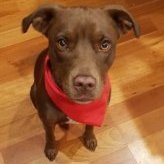
1:72 Douglas Boston Mk.III 'Intruder' *FINISHED*
Dunny posted a topic in Work in Progress - Aircraft
Hi All, My next build will be Special Hobby's Douglas Boston Mk.III Intruder. Here's the box art: Here's the sprue shots: The decals look nicely in register: There's a small PE fret: I'm going to model this as AL468 of 418 'City of Edmonton' Sqn, RCAF, based at RAF Bradwell Bay, December 1942 to June 1943. 418 had the highest kill tally of any squadron within the RCAF. Their hazardous Intruder missions were flown deep into enemy territory at low level, in order to engage night fighters taking off or landing at their home bases, all without the benefit of radar - brave men indeed. Here's the scheme: I cannot find any photos of AL468, but I am dubious as to the accuracy of this scheme. SH call out OG & DG over night, whereas I would have thought it would be in the standard night fighter scheme of MSG/DG over Night - I have asked the hive mind for clarification. In researching this kit I have found that there is potentially a nasty step between the fuselage & glazing, so I thought I'd investigate this early, so I could be prepared to shim the fuselage: Although there's a very slight step, it's nothing to write home about - maybe I got lucky? (or maybe the fuselage will push out with the interior in place - I shall proceed with caution). I'm off to start chucking primer around, so watch this space! Thanks for looking, Roger- 123 replies
-
- 18
-

-
- Special Hobby
- RCAF
-
(and 1 more)
Tagged with:

